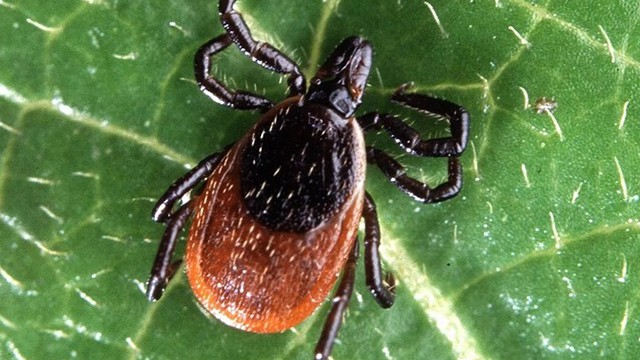Here’s What You Need to Know About Ticks and Lyme Disease in Brampton
Published June 26, 2018 at 4:16 pm

While it’s hard to criticize summer (and really, it’s blasphemous to do so), there are some minor pitfalls, and those pitfalls involve bugs.
While it’s hard to criticize summer (and really, it’s blasphemous to do so), there are some minor pitfalls, and those pitfalls involve bugs.
Especially bugs that can carry harmful diseases.
Now that summer is officially here, the Region of Peel is reminding residents that they can take steps to reduce their exposure to ticks potentially infected with Lyme disease.
While the disease is frightening, people should take comfort in the fact that, overall, the risk of contracting Lyme disease in Mississauga, Brampton and Caledon remains low.
That said, the region says residents need to remain vigilant in avoiding tick bites.
“The best way to avoid the risk of contracting Lyme disease is to prevent being bitten by a tick,” says Paul Callanan, director, health protection, Region of Peel – Public Health. “Residents are encouraged to wear insect repellent and appropriate clothing when outdoors near areas where ticks live such as wooded areas with leaf litter and long grass.”
If you end up with a tick on your body, you can submit the creepy-crawly specimen to the Region of Peel – Public Health. If you find a tick on your body, you can submit it Monday to Friday to one of the following three convenient locations across the Region of Peel for identification and testing:
- Service Peel, 7120 Hurontario St., Mississauga – 8:00 a.m. – 4:30 p.m.
- Town of Caledon, Administration Building, 6311 Old Church Rd., Caledon East – 8:30 a.m. – 4:30 p.m.
- Service Peel, 10 Peel Centre Dr., Brampton – 905-799-7700 – 8:00 a.m. – 4:30 p.m.
While news regarding Lyme disease has been prevalent in the media for some time, it’s important to remember that not all ticks carry the disease.
According to the region, Lyme disease is contracted only through the bite of a blacklegged tick (seen below):

Lyme disease symptoms can begin to show between three and 30 days, and they include a rash, fever, chills, headaches and fatigue.
The region says early diagnosis and treatment are key to stopping the disease from becoming serious, so you should see your doctor if you begin to feel ill after a tick bite.
If you cannot avoid exposure to tick habitats or frequent outdoor locations and activities, you can avoid bites and risk of infection by:
- Checking your body for ticks and removing attached ticks as soon as possible.
- Wearing long-sleeved shirts that fit tightly around the wrist and long pants tucked into socks.
- Using insect repellent containing DEET on skin and clothing.
- Showering or bathing within two hours of being outdoors to wash away loose ticks.
For more information around tick safety and removing ticks from the skin, click here.
insauga's Editorial Standards and Policies advertising





